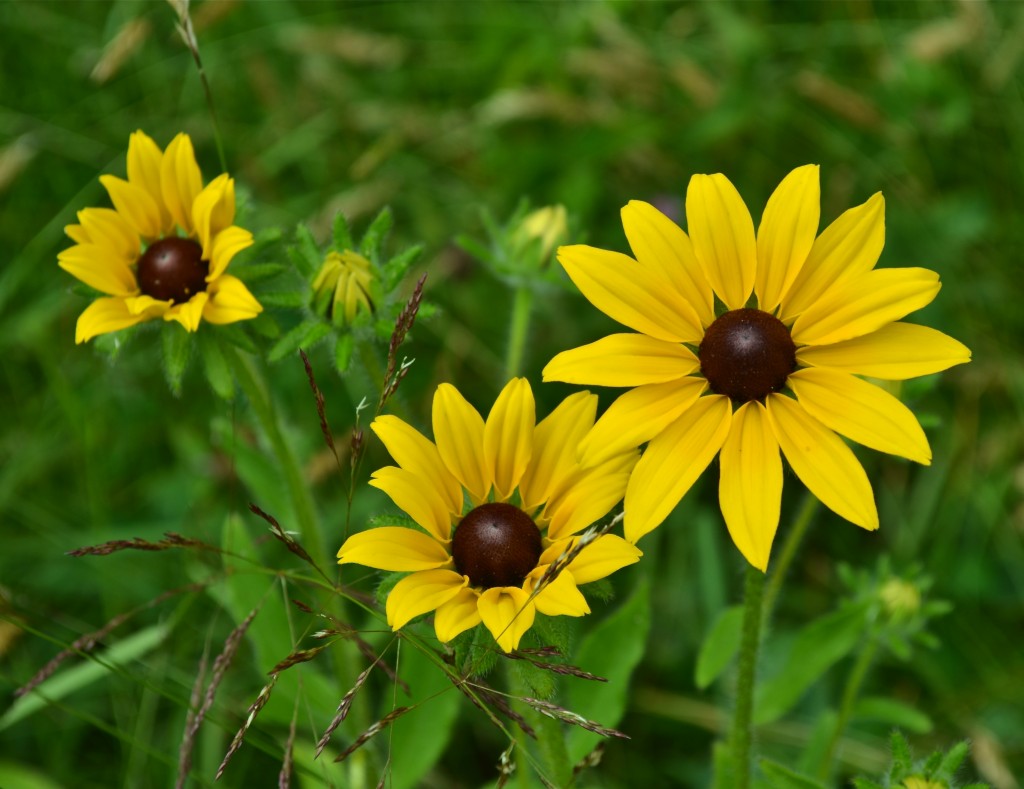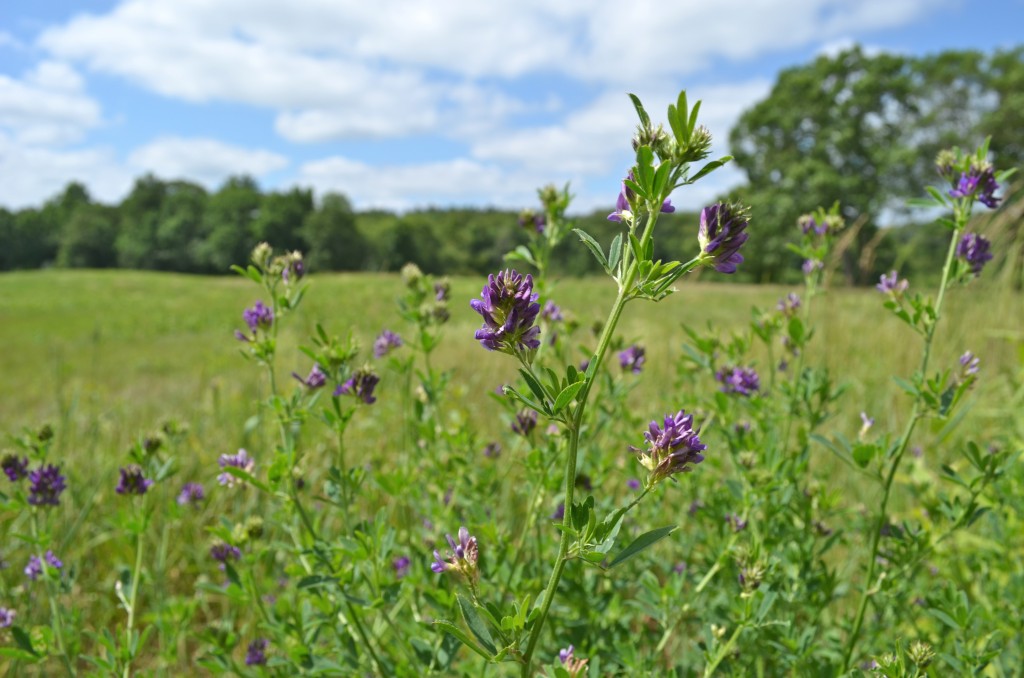 The roots were used for medicinal purposes– Ojibwas used it to treat snake bites. Aster family. Native to the Midwestern U.S. (a prairie flower!)
The roots were used for medicinal purposes– Ojibwas used it to treat snake bites. Aster family. Native to the Midwestern U.S. (a prairie flower!)
Black-eyed Susan, Yellow Ox-eye Daisy (Rudbeckia hirta)

This is the big glossy weed that gets dark purple berries on magenta stems later in the season. Their juice was used by natives to make dye to paint their horses! The Constitution was written in dye MADE FROM POKEBERRIES!
Okay now, you know that song about Poke Salad Annie? That refers to this plant.
Poke salad was (is?) a southern dish, but the leaves must be cooked and rinsed at least twice, because the whole plant is toxic unless properly processed. The berries are poisonous to mammals, but birds can eat them. 4 – 10 feet tall. Native.
Pokeweed, Poke (Phytolacca americana)
 An important forage crop. The English name comes from the Spanish name alfalfez, which comes from the Arabic al-fisfisa, meaning fresh fodder. Has been cultivated since at least the 4th century AD. Was introduced to the Americas by the Spanish as fodder for their horses. It’s where alfalfa sprouts come from! Pea family.
An important forage crop. The English name comes from the Spanish name alfalfez, which comes from the Arabic al-fisfisa, meaning fresh fodder. Has been cultivated since at least the 4th century AD. Was introduced to the Americas by the Spanish as fodder for their horses. It’s where alfalfa sprouts come from! Pea family.
Interesting note from Wikipedia: “Alfalfa pollination is somewhat problematic because Western honey bees, the most commonly used pollinator, are not suitable for this purpose; the pollen-carrying keel of the alfalfa flower trips and strikes pollinating bees on the head, which helps transfer the pollen to the foraging bee. Western honey bees, however, do not like being struck in the head repeatedly and learn to defeat this action by drawing nectar from the side of the flower. The bees thus collect the nectar, but carry no pollen and so do not pollinate the next flower they visit. Because older, experienced bees do not pollinate alfalfa well, most pollination is accomplished by young bees that have not yet learned the trick of robbing the flower without tripping the head-knocking keel. When western honey bees are used to pollinate alfalfa, the beekeeper stocks the field at a very high rate to maximize the number of young bees.”
Alfalfa, Lucerne ( Medicago sativa)
Bonus picture: This is the scene where I photographed the alsike clover, the milkweed, the curly dock, the alfalfa, the pale swallowwort… This area used to be a dairy farm, and I understand that it was a common thing to plant a useful tree (in this case, a Shagbark Hickory) at the high point of your field, so that you would have a shady place to sit while you kept an eye on your herd or your flock (as demonstrated here, but he’s just watching Lucy).
Pardon my fingers; the wind was blowing and I was trying to steady the plant enough for a photo. There is just one of these plants all by itself in this field, but it’s considered highly invasive, so I wonder if there will be more next year. An unusual color. A twining vine. Milkweed family. Introduced from Europe in the 19th century.
Pale Swallowwort, Dog-strangling Vine (Cynanchum rossicum)
The Milkweed is just starting to bloom, which makes it seem like I can already see the end of summer, picturing those white-feathered seeds to come. Fragrant blooms. Provides food for many insects. Host plant for caterpillars of monarch butterflies and many moths. The flower nectar was used by native people as a sweetener. Milkweed family. Native to North America.
Common Milkweed, Butterfly flower, Silkweed (Asclepias syriaca)